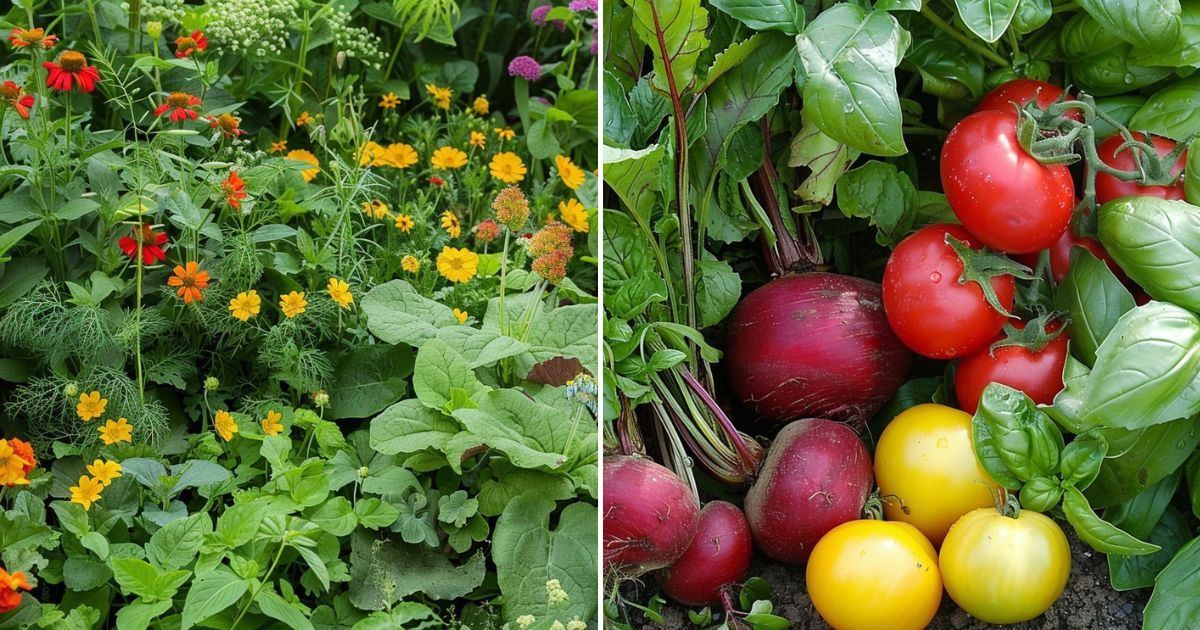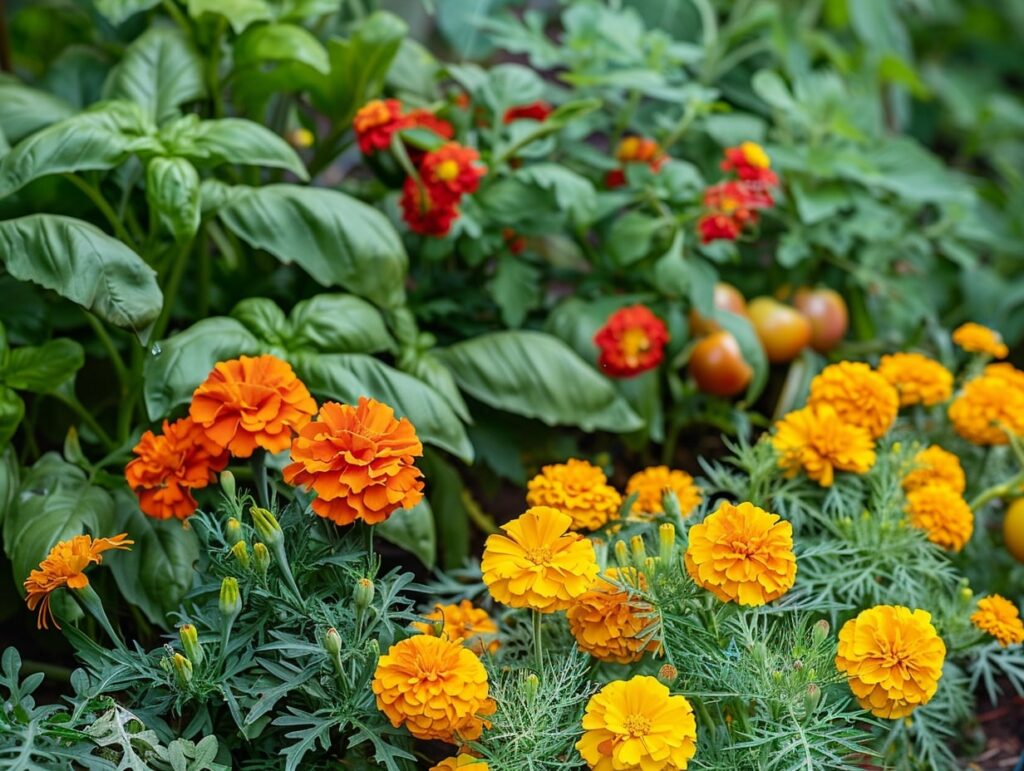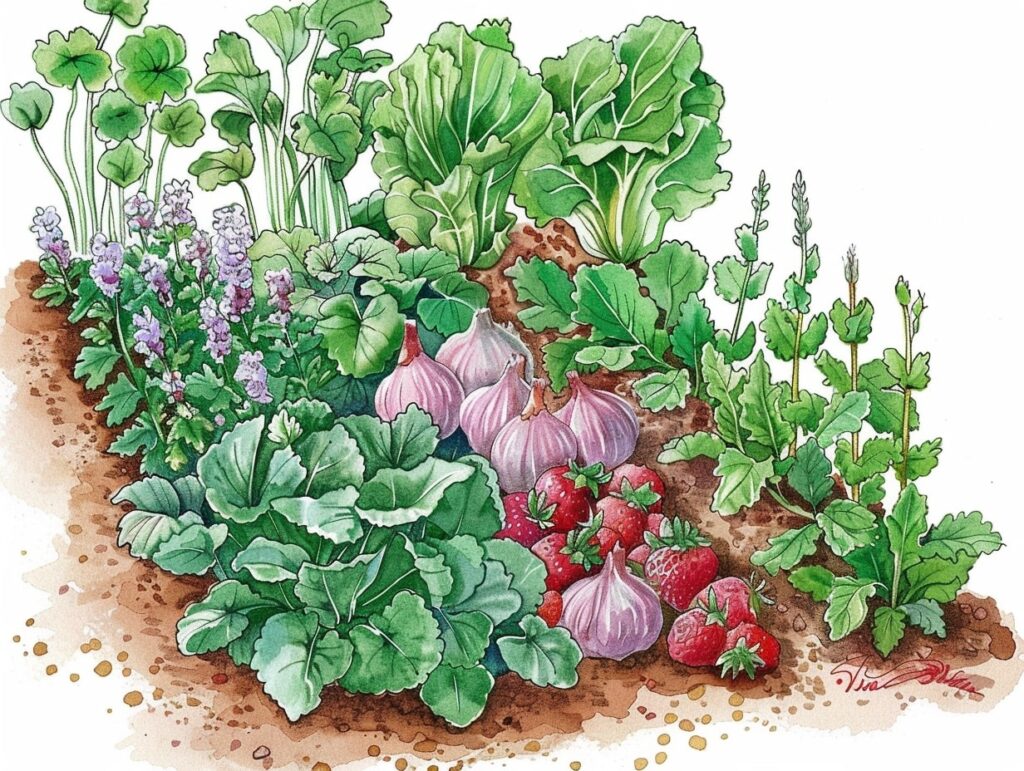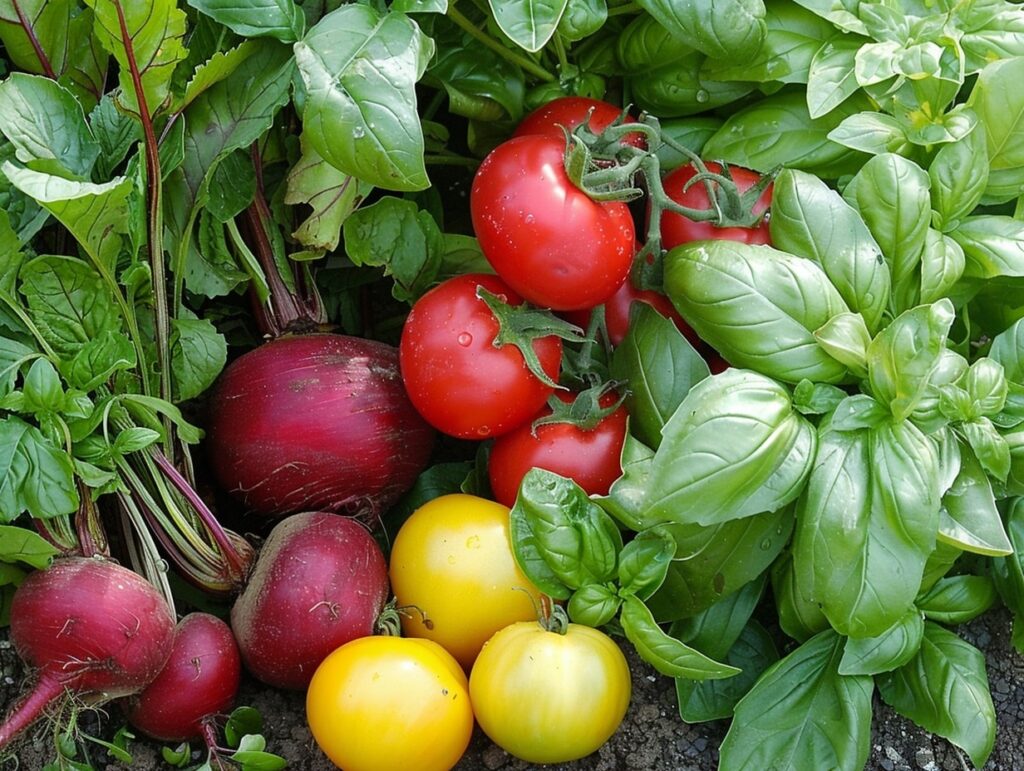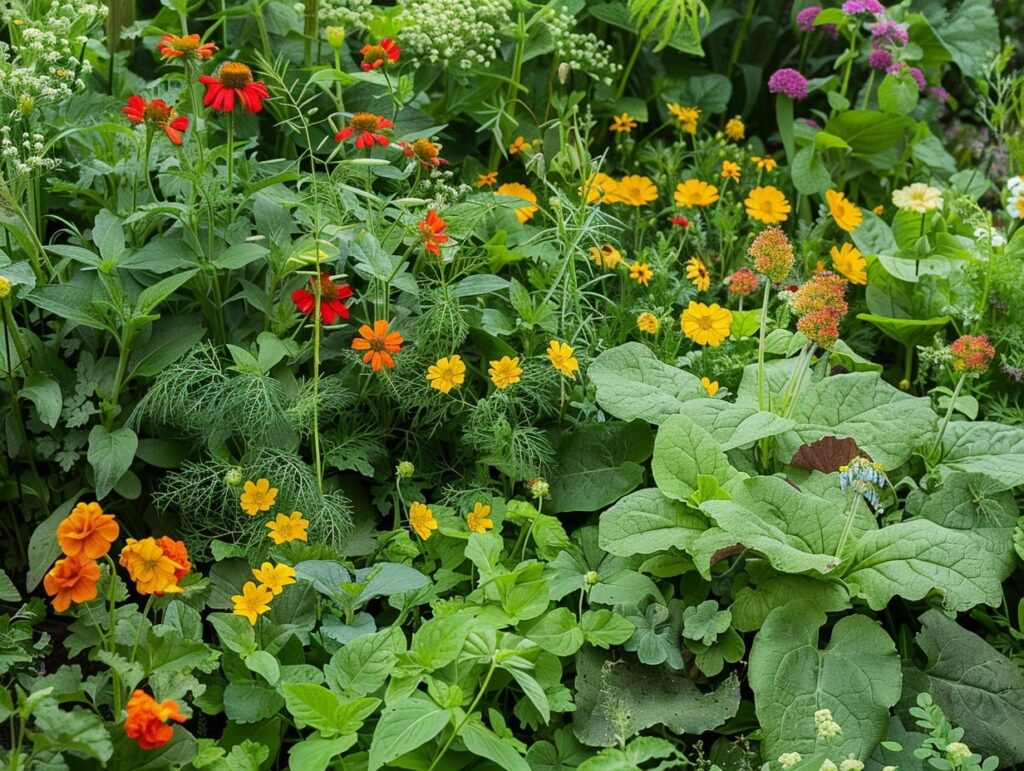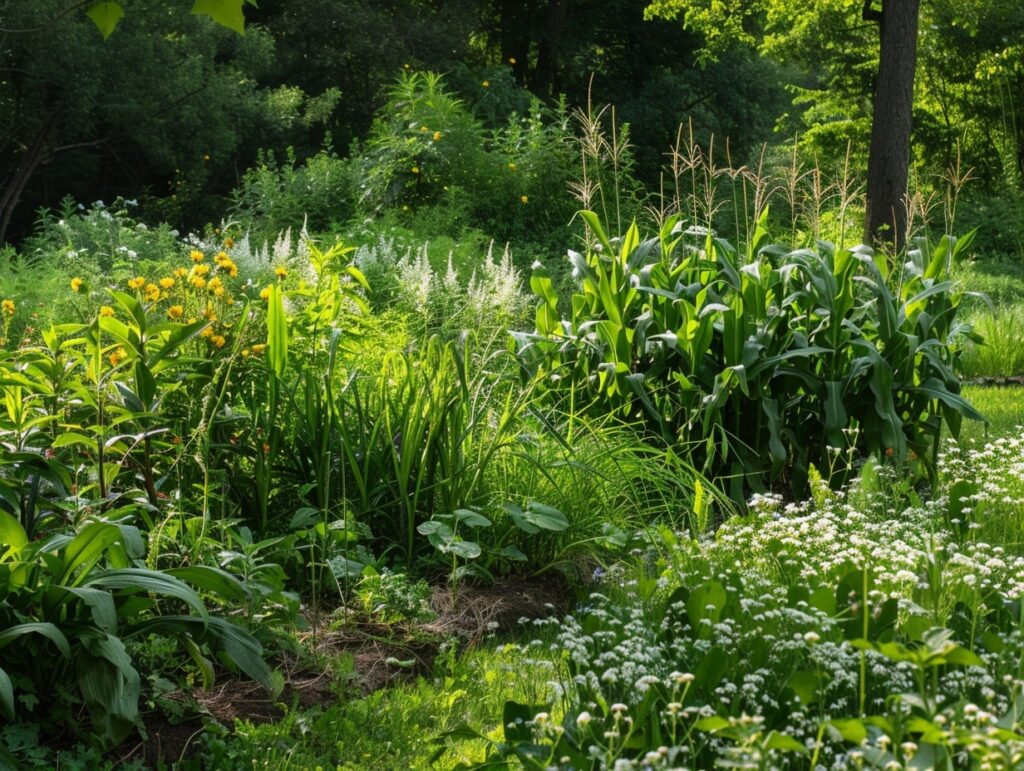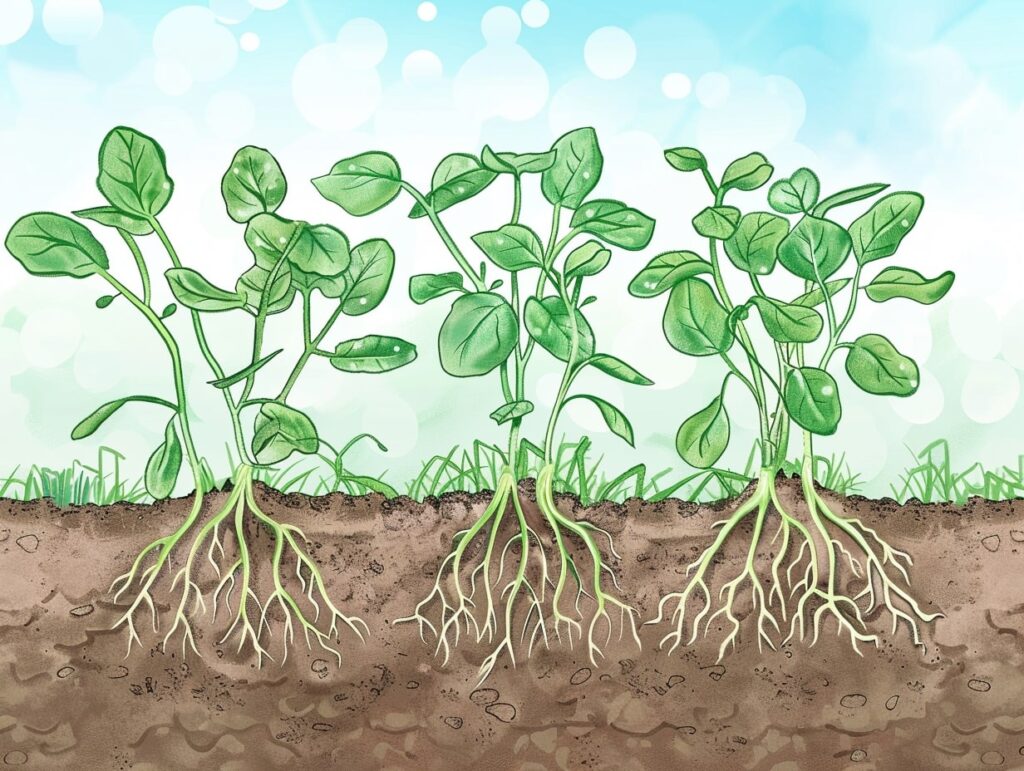Imagine transforming your garden into a thriving ecosystem where each plant supports the growth and health of one another. With companion planting, you not only enhance the beauty of your vegetable garden but also boost its productivity and resilience.
This age-old gardening technique involves pairing plants that mutually benefit each other, resulting in numerous surprising advantages.
As you delve into the world of companion planting, you’ll discover a natural way to deter pests, attract beneficial insects, and improve soil health. Think about how marigolds can repel nematodes, or how basil can enhance the flavor and growth of tomatoes.
These simple yet powerful plant partnerships can make a huge difference in your gardening success.
Beyond pest control and better soil, companion planting can also lead to richer harvests. By understanding which plants thrive together, you can maximize your garden space and encourage the vigorous growth of your vegetables.
Imagine harvesting more vibrant and flavorful produce while using fewer chemical interventions. It’s a win-win for you and your garden!
Elevated Garden Health
Companion planting can significantly boost the general well-being of your garden. By carefully selecting plant pairings, you can organically fend off pests and prevent plant diseases.
Natural Pest Control
Companion planting can discourage harmful insects from damaging your crops. Plants like marigolds and basil emit scents that repel common pests such as aphids and mosquitoes.
Marigolds are especially effective against nematodes, tiny worms that attack the roots of vegetables.
Basil planted near tomatoes can deter tomato hornworms from ravaging your garden.
Certain plants serve as sacrificial hosts; for example, nasturtiums attract aphids away from your valuable crops, creating a natural pest barrier. This reduces the need for chemical pesticides, making your garden healthier and maintaining ecological balance.
Disease Prevention
The strategic pairing of plants can also minimize disease spread. Garlic and onions, known for their antifungal properties, can be planted near susceptible plants like strawberries to ward off fungal infections.
Legumes such as beans and peas enrich the soil with nitrogen, a vital nutrient. This boosts soil fertility and reduces the likelihood of disease.
Adequate spacing through companion planting improves air circulation, minimizing conditions favorable for the spread of pathogens. For instance, planting basil with tomatoes can reduce the incidence of mildew, providing a natural shield against disease.
Enhanced Growth and Flavor
Companion planting can significantly enhance both the growth rates and the taste profiles of your vegetables. By strategically positioning plants that benefit each other, you can optimize nutrient uptake and create flavor synergies among different vegetables.
Optimal Nutrient Uptake
Some plants have root systems that draw different nutrients from the soil, ensuring a balanced nutrient profile for nearby plants. For instance, legumes fix nitrogen in the soil, benefiting leafy greens like spinach and lettuce.
Growing deep-rooted plants like carrots next to shallow-rooted plants such as radishes also minimizes competition for nutrients.
This practice promotes healthier and more vigorous plant growth. Marigolds can deter nematodes, which improves nutrient availability for neighbor plants.
Flavor Synergy Among Plants
Certain pairings can enhance the flavors of vegetables when grown together. Basil and tomatoes are a classic example. Basil improves the flavor and growth of tomatoes, making them sweeter and more robust.
Garlic, when planted near beets, intensifies the beets’ natural flavors. Herbs like thyme can improve the aromatic oils in vegetables such as bell peppers, enriching their taste. These flavor synergies create a more enjoyable and diverse harvest.
Biodiversity Boost
Enhancing biodiversity in your vegetable garden can offer numerous advantages. When you practice companion planting, you are actively inviting beneficial insects and fostering richer microhabitats.
Attracting Beneficial Insects
Companion planting can naturally draw beneficial insects to your garden. For instance, planting flowers like marigolds and nasturtiums alongside vegetables can attract pollinators such as bees and butterflies.
Ladybugs and lacewings, which feed on pests like aphids, are also attracted to dill, fennel, and yarrow.
By integrating a variety of plants, you create a dynamic ecosystem. This diversity helps in pest control by balancing the number of beneficial insects and harmful pests. Essentially, you are creating a natural form of pest management without chemical intervention.
Creating Microhabitats
Companion planting creates a range of microhabitats in your garden by varying plant heights and types. Tall plants like corn can provide shade, which benefits shade-tolerant plants such as lettuce.
Ground covers like clover help reduce soil erosion while maintaining soil moisture.
This diversity not only supports plant health but also promotes a thriving environment for soil organisms, such as earthworms and fungi. These organisms contribute to soil fertility, ensuring that your garden remains productive.
By providing varied living conditions for plants and creatures alike, your garden becomes a more resilient and sustainable space.
Water Management Efficiency
Companion planting can be a game-changer for water management in your vegetable garden. Here are some specific ways it can boost soil moisture and reduce water loss.
Improved Soil Moisture Retention
Certain plants, like beans, have deep root systems that help to pull moisture from deep within the soil. This ensures that the surface plants, such as lettuce, have better access to the water they need. These deep roots also break up hard soil layers, allowing for better water penetration.
Mulching plants, like squash, spread their vines across the ground, acting as a natural mulch that traps moisture. This reduces the need for frequent watering. Mulch can also prevent the growth of water-hogging weeds, ensuring that your vegetables get their fair share of hydration.
Reduction in Water Evaporation
Strategically planting taller crops, such as corn, next to shorter, more delicate plants can create a shade canopy. This canopy reduces evaporation by protecting the soil from direct sunlight.
This method ensures that water stays in the soil longer, making it available for your plants over an extended period.
Another way to reduce evaporation is by using groundcover plants, like sweet potatoes. These plants cover the soil entirely, creating a barrier that lessens water loss due to wind and sun exposure. Groundcovers also keep the soil cooler, which is beneficial during hot summer months.
Weed Suppression Tactics
Effective weed control is essential for a thriving vegetable garden. By using companion planting, you can naturally deter weeds and implement ground cover strategies that minimize unwanted growth.
Natural Weed Deterrence
Certain plants can help suppress weed growth through their natural properties. Marigolds release chemicals from their roots that deter the germination of weed seeds. This makes them excellent companions for vegetables like tomatoes and peppers.
Mint is another great deterrent known for its aggressive spreading, which can crowd out weeds. Just remember to plant mint in a confined space, as it can become invasive. Garlic and onions can also help; these plants repel weeds and other pests with their strong odors.
Ground Cover Strategies
Utilizing ground covers can significantly reduce the prevalence of weeds. Clover and vetch are great options. They cover the soil, making it difficult for weeds to take root.
Straw mulch is another effective tactic. It protects the soil while suppressing weed growth. Use straw around plants like cucumbers and squash for the best results.
Additionally, sweet alyssum can act as a ground cover, providing both weed suppression and attracting beneficial insects.
In essence, companion planting is a holistic approach that integrates nature’s wisdom into your gardening practices. By embracing this technique, you not only achieve a more productive and beautiful garden but also contribute to a healthier environment.
As you continue to explore and implement companion planting strategies, you’ll discover the true potential of your garden and the joy of cultivating a space where plants and nature work in harmony.
